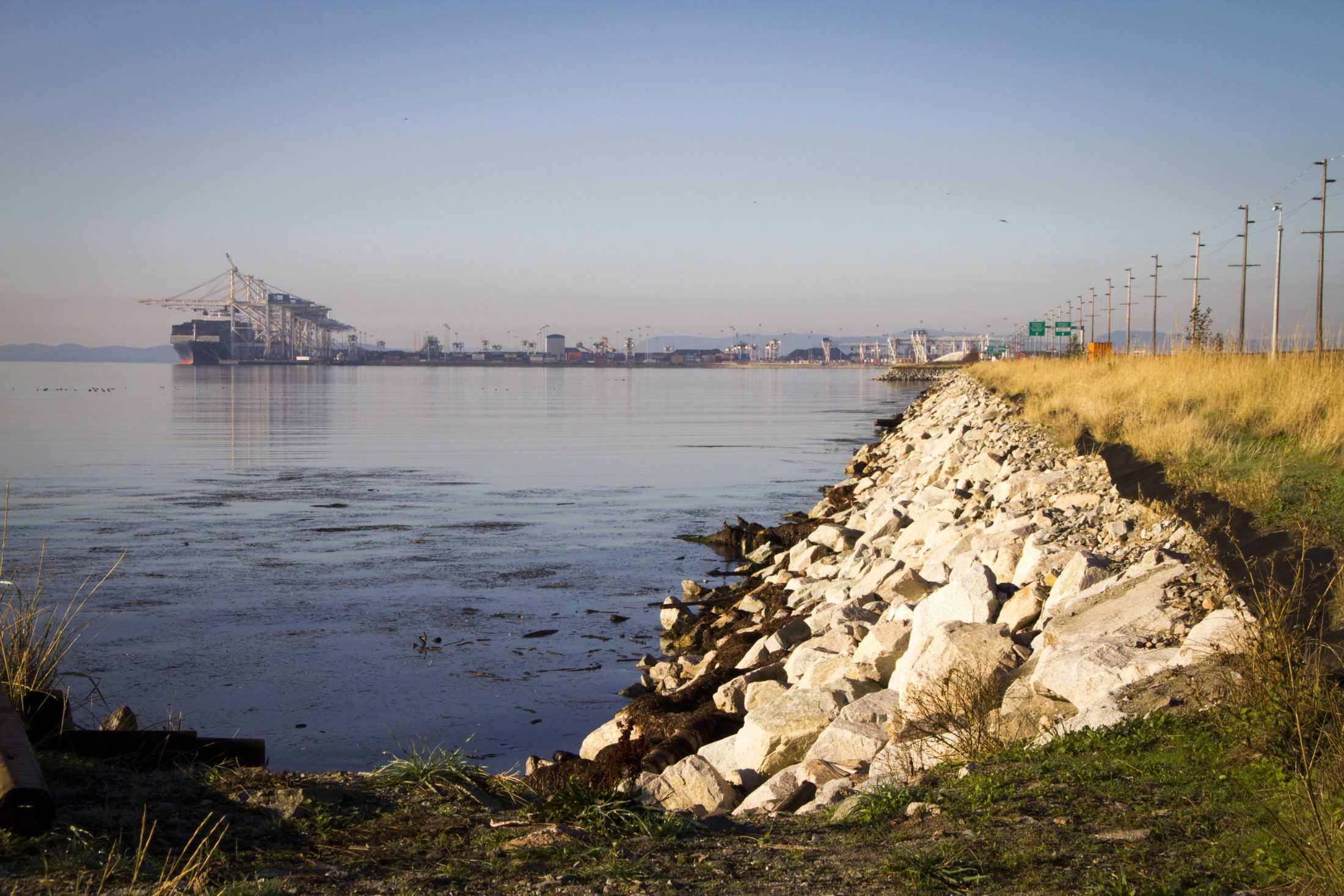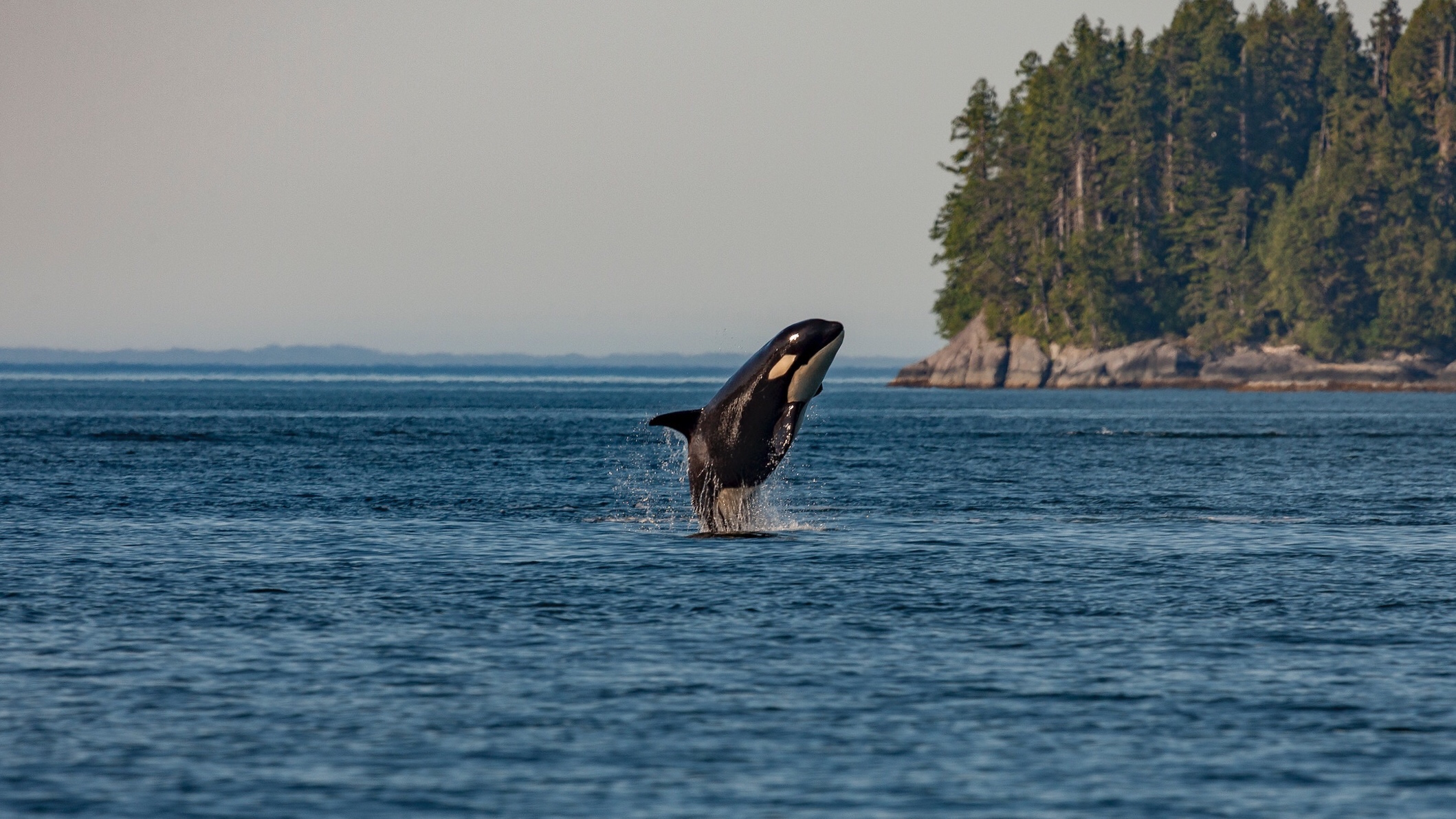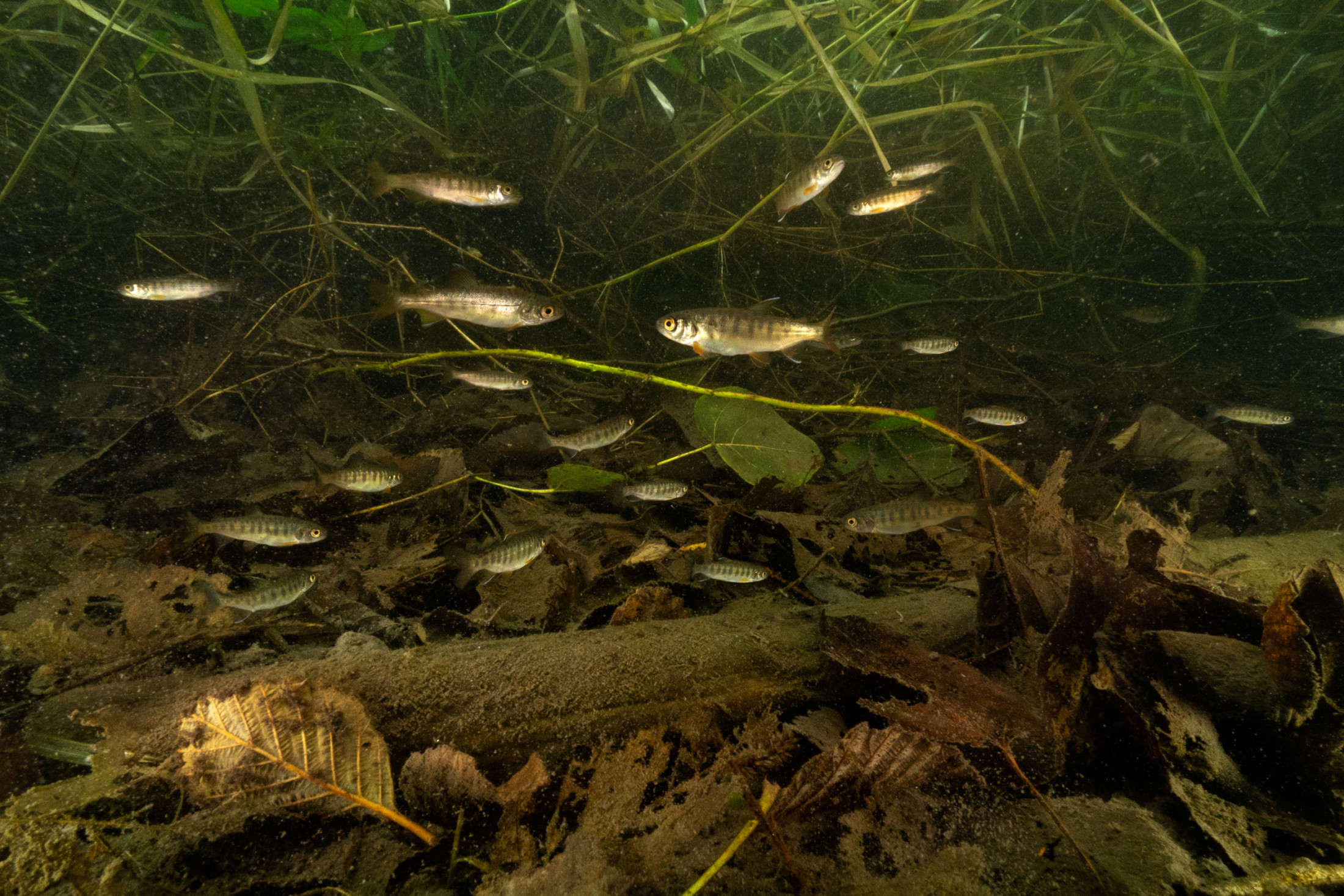
‘Afraid of the water’? Life in a city that dumps billions of litres of raw sewage into lakes and rivers
10 billion litres of sewage are dumped into Winnipeg’s lakes and rivers each year. Some...
When Tsawwassen Chief Ken Baird, whose ancestral name is swənnəset, looks at where the Fraser River meets the ocean, he worries about the effects of industry on the water that is a life source for his people.
“It’s a real challenge to protect our land given all that is happening on the Fraser,” he said.
“It’s becoming harder to be stewards of the Salish Sea.”
Baird said industry is impacting the nation’s food security as salmon, eulachon and sturgeon populations decline. As a result, the community has become more reliant on Dungeness crab. Now, all these species face a new threat: the proposed expansion of the Port of Vancouver’s container terminal at the mouth of the Fraser River.
The existing terminal at Roberts Bank, Deltaport, juts across an eelgrass bed that provides shelter for migrating juvenile salmon. The Roberts Bank Terminal 2 project would double the size of Deltaport, creating an artificial island about the size of 150 football fields. The Fraser estuary has already lost 70 per cent of its salmon habitat, and the proposed project would deplete an additional 177 hectares.

Deltaport transects an eelgrass bed that provides vital habitat for juvenile salmon. Photo: Vancouver Fraser Port Authority
Cliff Stewart, vice-president of infrastructure at the Vancouver Fraser Port Authority, told The Narwhal by email that the proposed location poses the least impact on the environment and nearby communities.
“We are confident that we can proceed with this project in a way that protects the environment,” he added.
The federal government has until November to make its decision on whether or not to approve the project. In the meantime, the port is pursuing environmental and regulatory permits.
Baird doesn’t see the project in isolation but situated within widespread degradation of the Fraser River. The lower Fraser is already a centre of industrial activity, lined with warehouses and manufacturers, the BC Ferries Tsawwassen terminal and other marine terminals like the Fraser Surrey Docks. In addition to Terminal 2, several other industrial projects are proposed along the lower river, including the Trans Mountain pipeline expansion, a jet fuel storage facility, an LNG export terminal and a coal export terminal.
A federally appointed review panel concluded the Terminal 2 project would have “significant and adverse cumulative effects” on two populations of chinook salmon, including a threatened population in the lower Fraser River, southern resident killer whales, Dungeness crab and the ability of people from Tsawwassen First Nation to access the water, which has already been impeded by industry.
“Members indicated they could no longer walk along their foreshore or gather marine resources for communal activities … [and] stated that the ability to play in the ‘front yard’ of the nation had been taken from their youth and future generations,” reads the panel’s report, which was released in March.
Baird said the health of Tsawwassen culture and language relies on the health of the land and water. In hən̓q̓əmin̓əm̓, the word sc̓əwaθən, or Tsawwassen, means “the land facing the sea.”
Tsawwassen First Nation reserve lands are very close to Roberts Bank and residents face risks associated with increased pollution and noise. Already, Baird said, “the light and noise from the existing port is constant.”
“When it’s high tide, you can hear things clear as day. They’re about five kilometres from us out there. But on a clear night, when the water is high, it sounds like they’re just a few hundred feet away,” he said.

The noise and lights from Deltaport already disrupt life on Tsawwassen First Nation reserve lands. Photo: Carol Linnitt / The Narwhal
The panel found the project would result in significant adverse effects on human health due to exposure to nitrogen dioxide and particulate matter (PM2.5), which can lead to heart disease and respiratory infections. A 2019 study led by a researcher the University of British Columbia looked at particulate matter and found a higher rate of deaths among Canadians who lived in high-pollution areas compared to low-pollution areas.
On its website, the Port of Vancouver lists the “environmental benefits” of the project, including a plan to offset the effects of development with “the potential to make a meaningful contribution to the future health and recovery” of chinook salmon and southern resident killer whales.
But the review panel said the port’s proposed offsetting plan is “not sufficient,” since it offsets about 27 hectares while the project would destroy 177 hectares.
Baird said he’d like to see more efforts to enhance the environment on the Fraser, not just mitigate damage.
“[Industries] have an obligation to do enhancement to make up for their projects,” he said.
Tsawwassen First Nation recommended to the review panel that the Port of Vancouver prioritize the restoration of the foreshore and deteriorated marshland and put aside the necessary funds for the restoration in escrow prior to the project’s approval.
The nation signed a memorandum of agreement with the port in 2004 regarding development at Roberts Bank, but it is negotiating an addendum to the agreement because it says the proposal has changed “significantly” in the years since the agreement was signed. The memorandum is separate from the federal approval process.
The panel issued its report to the federal government in March with 71 recommendations, including ways to address negative impacts on wildlife, air quality and the ability of Tsawwassen First Nation and Musqueam Indian Band to harvest.
Stewart said the port authority takes the panel’s concerns seriously, but since the west coast is expected to run out of container capacity by the end of the decade, the project “is of paramount value to Canada’s trade.”
David Scott, a biologist with Raincoast Conservation Foundation, wrote about the need to consider the cumulative effects of industrial development along the Fraser in a recent report called Toward a Vision for Salmon Habitat in the Lower Fraser River.
“There’s a push to increase infrastructure, but that infrastructure is already responsible for disconnecting over 1,000 kilometres of salmon habitat,” he told The Narwhal.
“It’s really just turning the estuary into a giant parking lot.”
In the report, Scott and two co-authors said if several proposed projects on the Fraser are approved, there will be a “cumulative increase in container and tanker traffic” and underwater noise. This poses a more significant risk for marine life, like salmon and southern resident killer whales, than a single, isolated project.

The proposed Roberts Bank Terminal 2 would make southern resident killer whales more vulnerable to underwater noise, ship strikes and the reduced availability of chinook salmon. Photo: Thomas Lipke / Unsplash
Stewart said the port authority has plans to mitigate noise during construction and once the terminal is operational. For instance, the port will enlist marine mammal observers to identify when a mammal is in the area and stop construction accordingly and do long-term monitoring.
The expansion would further obstruct young salmon that already have to leave the safety of the eelgrass bed to swim around the existing causeway, forcing them into deeper, more saline waters when they are young and still adapting to salt water. Scott is concerned this will further weaken struggling chinook populations and the southern resident killer whales that rely on them for food. Southern residents are listed as endangered under the Species at Risk Act with just 73 whales left.
Misty MacDuffee, a biologist with Raincoast Conservation Foundation and co-author of the Vision for Salmon report, said noise from increased traffic would further impact the whales’ ability to hunt. The passage of a large container ship can reduce a southern resident killer whale’s echolocation range from 400 metres in quiet conditions to just 60 metres.
“This project is significantly worse than Trans Mountain in terms of an increase in traffic,” she said.
The Trans Mountain pipeline expansion would increase tanker traffic in the Burrard Inlet from five to 34 tankers a month, or 408 tankers a year. With Terminal 2, the port authority estimates annual traffic at Roberts Bank will increase from 329 vessels in 2019 to 468 vessels by 2035. But those increases aren’t often examined side by side, said MacDuffee.

The proposed Deltaport expansion would provide an additional 2.4 million 20-foot equivalent units of container capacity per year, doubling the Port of Vancouver’s current capacity. Photo: Vancouver Fraser Port Authority
“The cumulative effects piece doesn’t get considered,” she said. “As if everything else is just fine, it’s just one project. But the stressors on salmon or southern resident killer whales are huge.”
She called it a “frontier mentality” of exploitation even as species inch closer to extinction.
“We have a crisis. It’s not like we don’t know,” she said. “I don’t know why we continue to go down this road. Priority continues to be economic development at any cost.”
While many are concerned the terminal will lead to increased traffic, Stewart said the total number of ships coming through the Port of Vancouver is not expected to change, but the ships will be bigger and more will dock at Roberts Bank instead of other terminals.
“What will change is the size of the ships, which will be slightly larger on average if the project proceeds, and the amount of cargo loaded and unloaded in Vancouver, which will increase by approximately 33 per cent,” he said.
In the Vision for Salmon report, Scott and his co-authors sought solutions to restore salmon habitat. They said Terminal 2 needs to be reviewed in the context of dredging and water pollution by industry, flood infrastructure that also obstructs salmon and climate change.
They recommended all levels of government enact “fish-first policies” for land and water use by prioritizing fish-friendly infrastructure and preventing development in key habitats.
“Our vision is to really try to reconnect the estuary,” Scott said. “One of the key pieces is not to do any more damage.”
They held workshops with First Nations, communities and organizations about what future they wanted for the river. Ideas included better collaboration between governments, more nature-based solutions and more funding for Indigenous guardians programs.
Another idea was to reflood Sumas Lake, which was drained by settlers in the 1920s to drive away mosquitos and create more farmland. The lake played an important role in absorbing freshet and providing habitat for salmon and game. Flooding the lake would require extensive planning and moving residents who occupy the land, now called Sumas Prairie.

Raincoast Conservation Foundation is calling for fish-friendly policies such as prohibiting development in key habitat areas like Roberts Bank. Photo: Fernando Lessa
As salmon populations dwindle, Dixon said it’s time for this kind of “bold and disruptive idea” that puts value in habitat restoration not financial payoff.
Murray Ned from the Semá:th (Sumas) First Nation said reclaiming the lake could also be a more cost-effective solution for flood control than dikes and pump stations which constantly need to be maintained.
“The reality of continuing to build these man-made infrastructure may not be the way to go,” he said. “Maybe [we] need to start reclaiming some of the lake to provide some flood relief.”
Another idea that’s been shown to work is knocking holes through infrastructure that blocks salmon migration paths. Raincoast partnered with Fisheries and Oceans Canada to breach three holes through the Steveston jetty in Richmond, B.C., to make way for juvenile salmon.
Like the terminal, jetties force small salmon that typically stay close to the shoreline out into deep, salty, predator-filled waters. MacDuffee said they’ve seen all five species of salmon using the breaches to get to a marsh blocked by the jetty.
“It’s amazing,” she said. “They haven’t been able to get to that marsh for 100 years.”
She said that after a century of habitat degradation, she didn’t think they’d see the benefits so quickly. It gave her hope that removing infrastructure and halting development can lead to salmon recovery.
“It shows that if we remove it, they will come,” she said.
But MacDuffee said there is little use in local restoration projects if they are constantly being “outpaced” by new developments like Roberts Bank.
“The first thing in recovery is to stop doing the harm,” she said.
“We can keep going down this road with making really bad decisions that have implications for species that many people rely on, or we can say no to projects and really double down and invest in the recovery of these wild populations.”
Get the inside scoop on The Narwhal’s environment and climate reporting by signing up for our free newsletter. On a warm September evening nearly 15...
Continue reading
10 billion litres of sewage are dumped into Winnipeg’s lakes and rivers each year. Some...

Court sides with Xatśūll First Nation, temporarily halting Mount Polley mine waste expansion

Break out the champagne: Emma’s storied life and leadership in journalism has earned her the...
